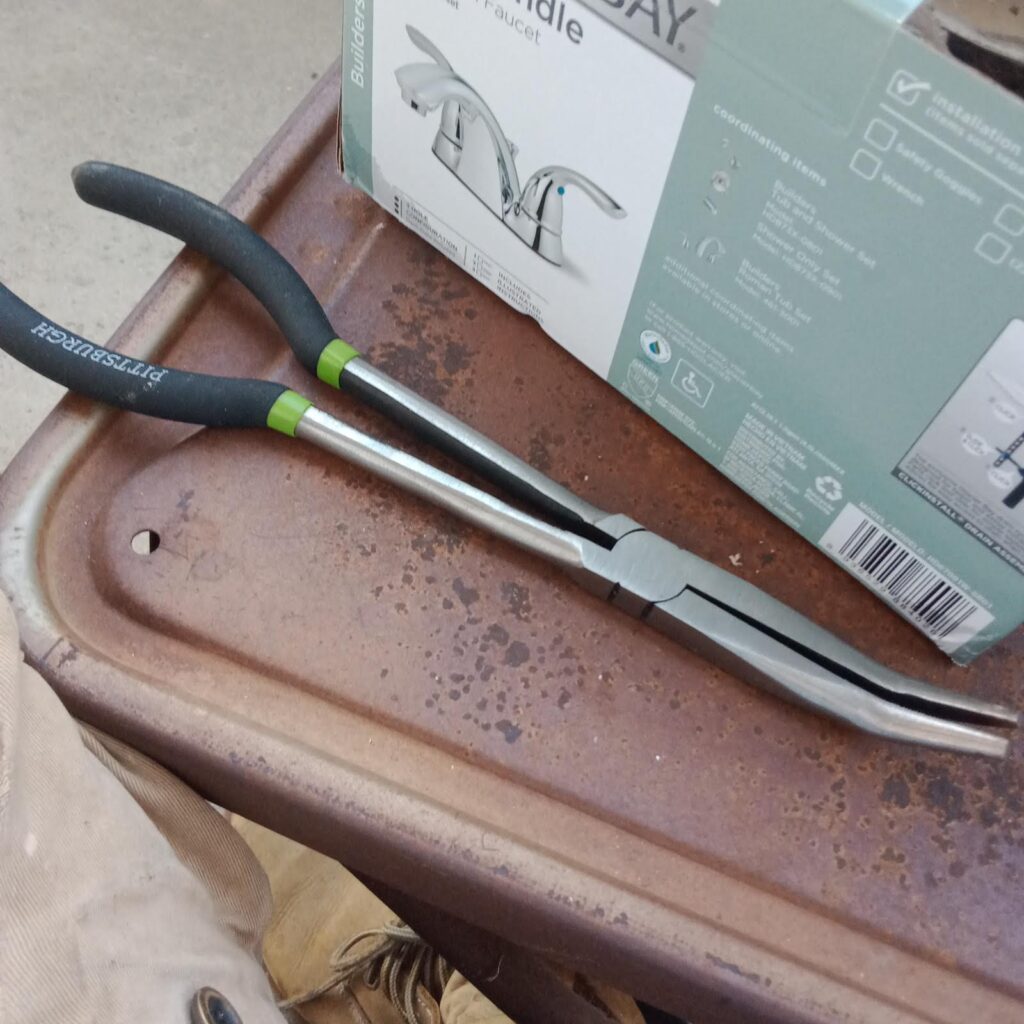Review and end results after the one I installed was destroyed.
I think the product is at the link above, but I’m not certain. I do know it was the low end Delta product. I bought it to replace a midrange Moen that, while acceptable, tended to wear out quickly, and require replacement cartridges, which were getting expensive. I found that Delta lasted longer, so I went with this alternative.
Unfortunately, when I got called in to fix this, I found out that, in trying to remove the aerator, had bent a copper line within the fixture, and broken off the part that holds the aerator. My guess was that they tightened it, then loosened it, bending the copper tubing back and forth, until it broke. My evidence was that the tubing was “pinched” equally on both sides.
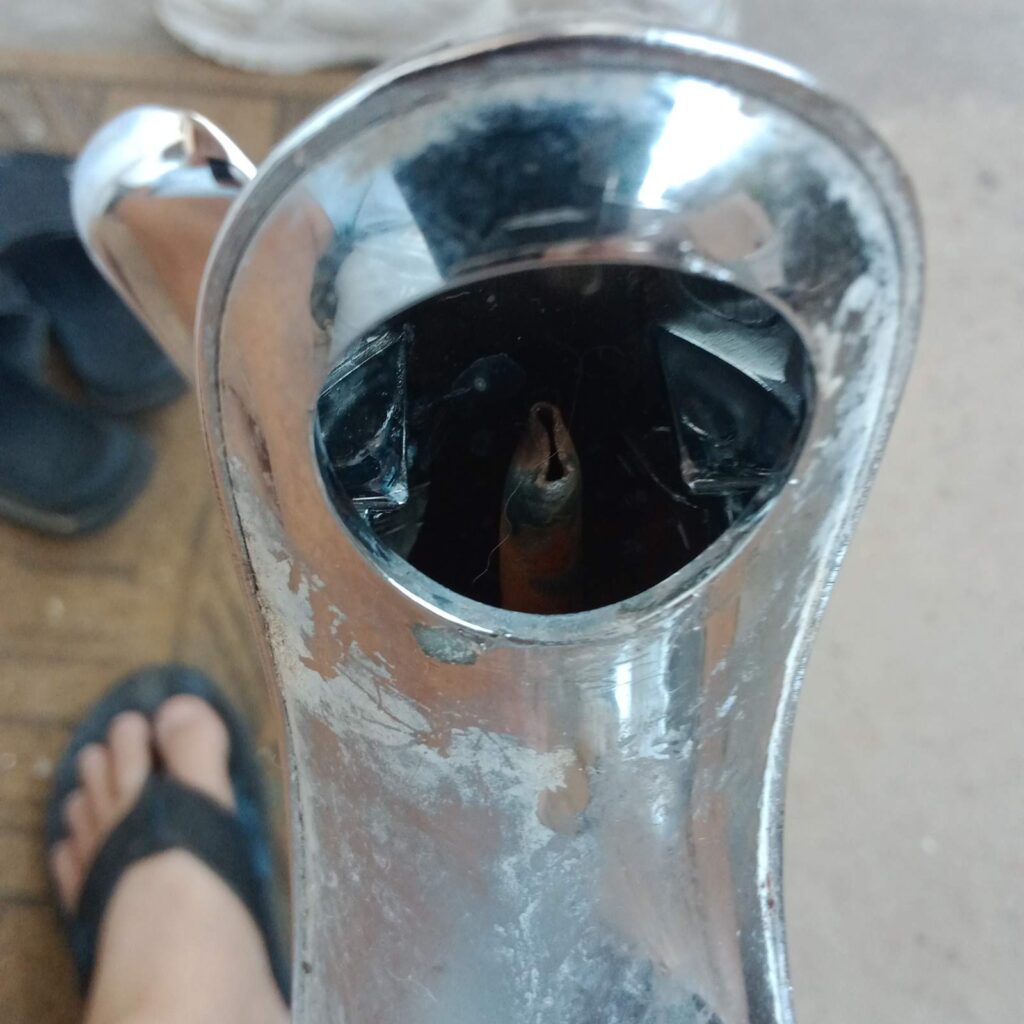
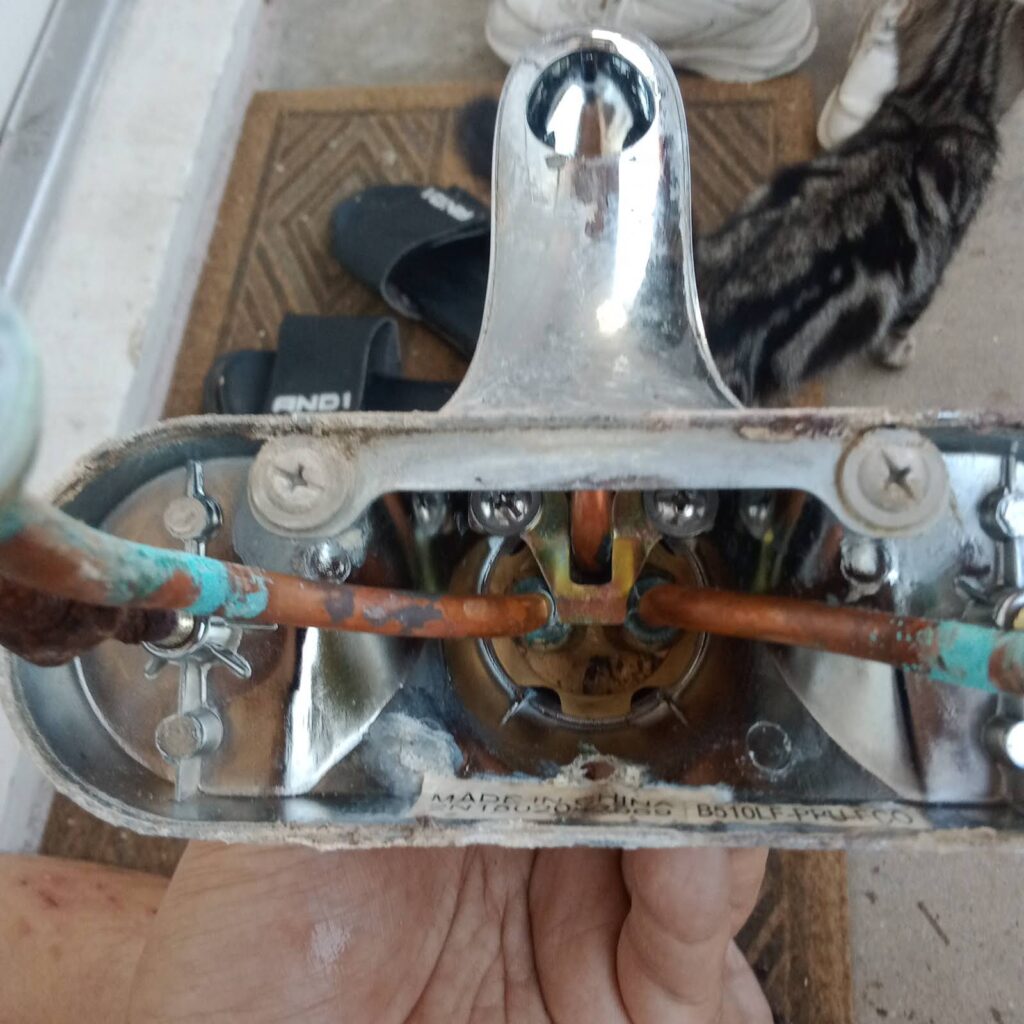
This seems to be an ongoing problem with these folks. They don’t know how to loosen the aerator without using a wrench. (You wrap it with rubber bands, and grip it with a towel. That usually suffices to give you enough grip to uncrew it.) By using a wrench, they apply enough force to damage the internals.
Which direction do you turn?
Remember this: Righty-tighty. Leftie-loosey.
Clockwise tightens. Counter-clockwise loosens.
When the thing is upside down, like in this fauchet, you should imagine the thing flipped over, so you’re looking down onto the nut or bolt or aerator. (That’s to say, they should turn it clockwise.)
How much force to use?
Generally, aerators are “finger tight” or “hand tight”.
Wingnuts are “finger tight”.
Nuts and bolts depend on the application, but you need a wrench.
In the old days, the faucet was made of molded, cast steel, with the aerator installed into a threaded hole — so it was difficult to bend anything. Today, the faucet is a steel shell around internal plumbing made of copper and brass. The aerator fits into a brass holder. Copper is a soft metal you can reshape with a light hammer, and bend with your hands.
Going forward, I’m going to be removing the aerator every few months, to clean it out, and reinstall it with some teflon tape or silicone grease, so they don’t have the need to “fix” it, and in the process, totally destroy the faucet.
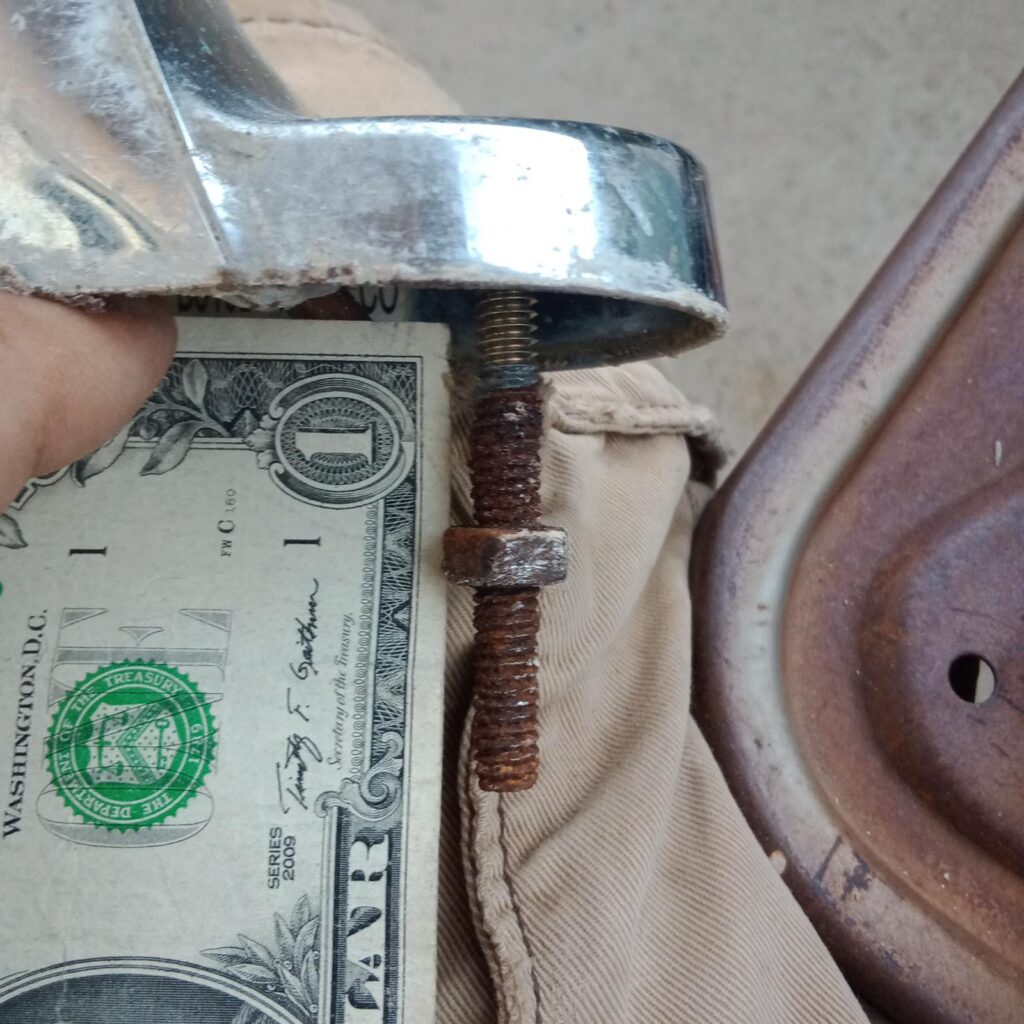
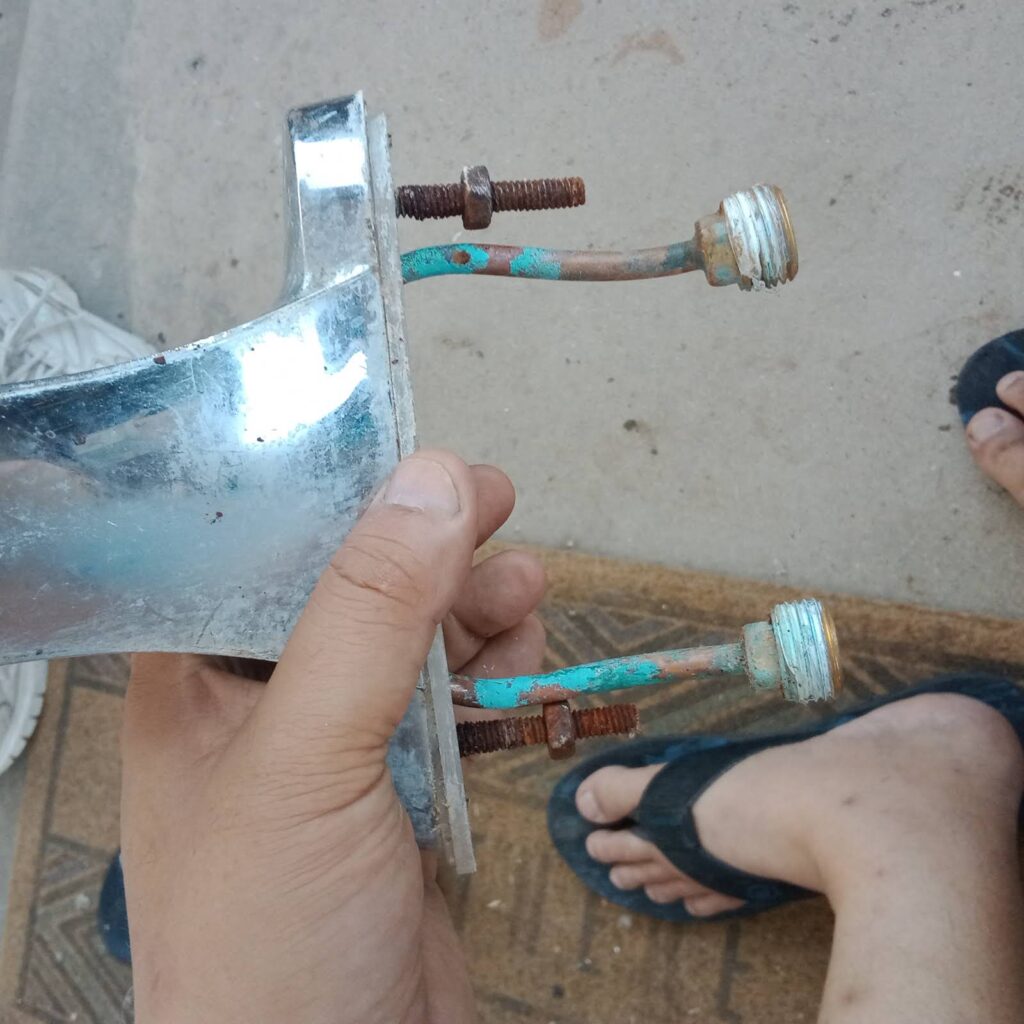
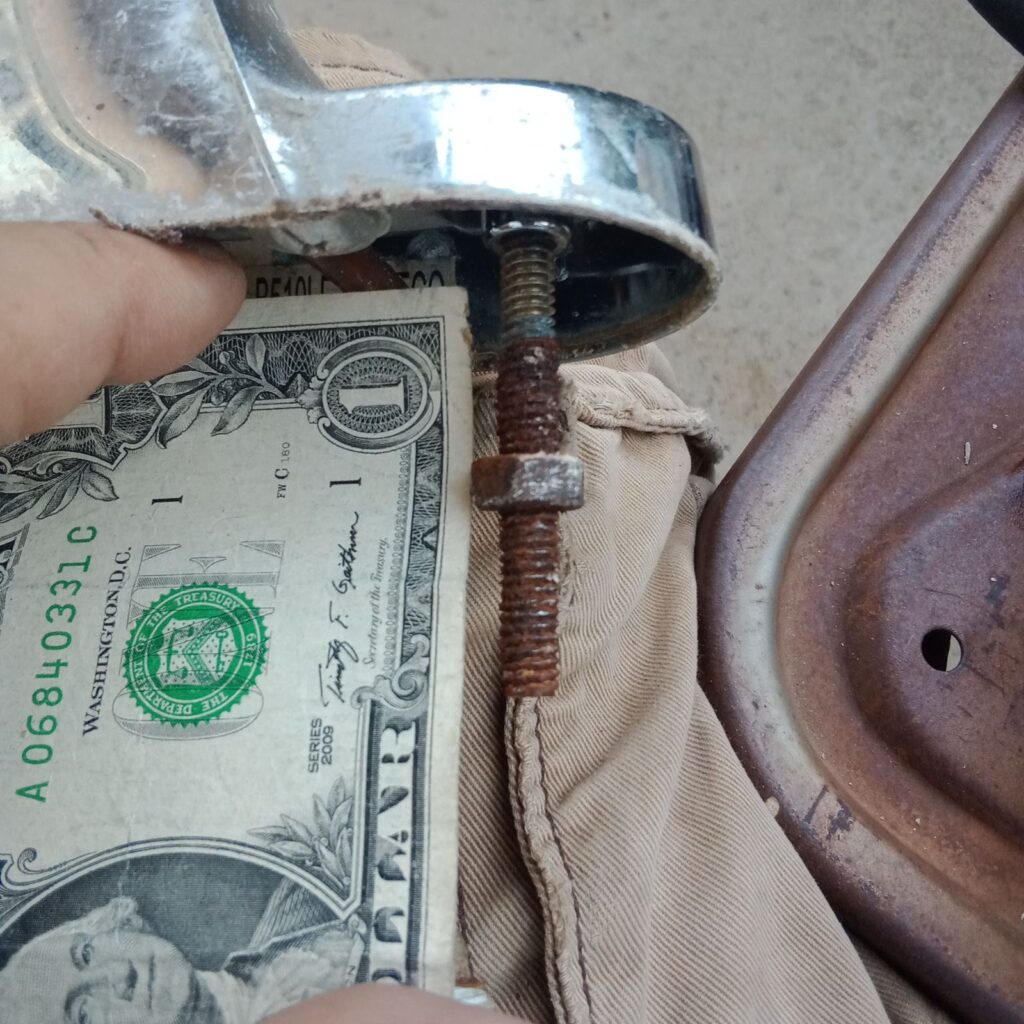
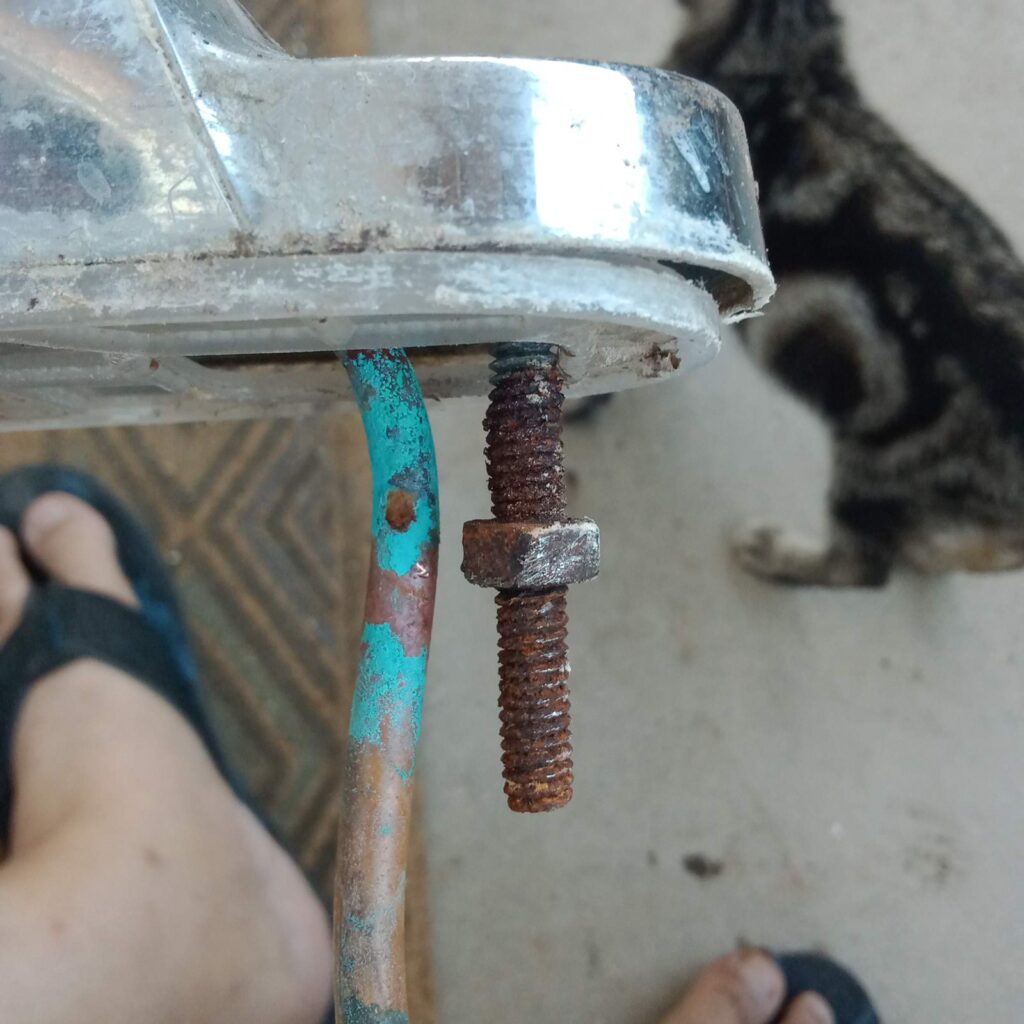
The problem I hit during removal was that the works are held onto the basin by a simple bolt-washer-nut set that’s welded into the faucet. You just tighten the nut, and it holds the faucet steady on the basin.
As expected. the nut was coated in calcium and rust and gunk. I wiped it off, and tried to turn it, but it was frozen onto the bolt. I needed to use a wrench, but nothing fit.
Even worse, the bolt was really close to the water supply line. I’m really doomed. I need either a deep drive socket, or a go-through socket. Either one would help me get a better grip on the nut. So, off to Harbor Freight I go.
Would I recommend this product? I guess it depends on the user.
Overall, I think it’s a decent product. I was hoping it was cheaper to operate than the Moen. Now, I’m not so sure. I’ve been using a two-handle Price Pfister on another basin, and I prefer that. Replacing “washers” costs around $4. Replacing a cartridge is around $15. That’s not as cheap as the classic “00” washer, but, acceptable.
Additionally, there’s a remote chance I can swap parts.
So, going forward, I’m going to stick with two-handle faucets, for that one reason. I’m not sure which brand to use, though. They all seem flimsy to me.
Tool Time
I ended up getting this tool for $5 from Harbor Freight. It kind of worked. It got one of the nuts off, and that allowed me to loosen the other side and remove the washer that held the nut tight.
